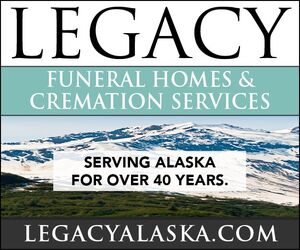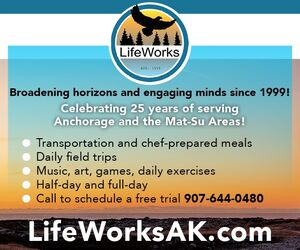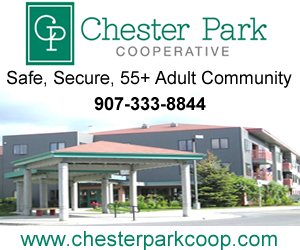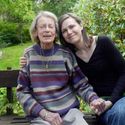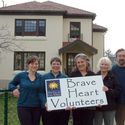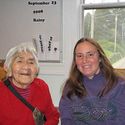Sitkans helping sitkans face devastating loss
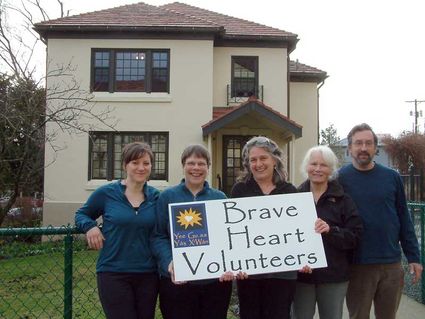
Courtesy Brave Heart Volunteers
Brave Heart Volunteers board members, left to right: Erika Knox, Ruth Culp, Joann Clyde, Sherie Mayo and Dennis Longstreth.
“Yee Gu.aa Yáx X’wán,” goes a traditional Tlingit farewell: “Be of brave heart.”
Of course, that can be easier said than done when facing terminal illness or the physical and mental deterioration that accompany aging—for individuals as well as their families.
“These are intense situations, involving people at very challenging points in their lives,” says Willow Moore, executive director of Brave Heart Volunteers, a non-profit organization that provides free services including education, information, referral, respite, case-management and volunteer visiting for Sitka’s isolated, ill, elderly and grieving.
“Our volunteers—who range in age from families with small children to 90—help these people maintain the highest quality of life possible, for as long as possible.”
Serving more than 400 Sitkans each quarter—nearly 5 percent of the city’s population—Brave Heart Volunteers fills a gap common to the small, isolated communities of Southeast Alaska: end-of-life/hospice care and associated bereavement support.
“Sitka’s a great place to live,” says Moore. “We want to extend that to the whole lifecycle. Unless you plan on living forever, you’ll face end-of-life issues sometime. You should face them with the support of your community.”
While Brave Heart’s volunteers are trained (and screened), they don’t provide nursing, per se, although the organization routinely connects care receivers with various medical—not to mention legal and financial—resources.
Rather, volunteers offer “compassionate care”: companionship, conversation and comfort. This ranges from light chores and laundry to shopping and errands, simple meal preparation and yard work to letter writing and reading, or just sitting and visiting.
“Taking care of a parent or spouse with a terminal illness or living with someone who no longer knows who they are can be very challenging,” says Moore, noting the recipients Brave Heart Volunteers care frequently suffer from Alzheimer’s disease and related dementia.
“Our volunteers often give the family the gift of time to take a break knowing their loved ones are in good hands.”
Largely volunteer-driven, year-round and free-of-charge, Brave Heart Volunteers is a prime example of United Way’s “Live United” movement, a collective belief in the power of working together for a common purpose. The Brave Heart volunteer roster numbers in the hundreds. An end-of-life situation can involve as many as 20 volunteers for each care receiver, and family members of care receivers routinely become volunteers, themselves.
“The families we serve like to thank us by volunteering,” says Moore. “And more than 80 percent become donors.”
Grassroots origins
Brave Heart Volunteers also runs caregiver support and education groups, legal and financial planning workshops, grief counseling and a drop-in lending library/resource room, in addition to music and storytelling groups at the Pioneer Home. Given this scope of services, it’s surprising to learn that Brave Heart Volunteers is only 12 years old, especially considering its grassroots origins.
Like other Southeast Panhandle towns, Sitka boasts a large and growing aging population. This, coupled with geographic isolation from other communities, creates a large and growing need for hospice services.
When they saw this gap, a handful of dedicated Sitkans led by two nurses, Aurelia Hughes and Jean Frank, brought Southeast Alaska’s trademark do-it-yourself spirit to community service, originally founding the organization in 2001 under the name Faith in Action.
Meetings were held, committees formed, proposals drafted. In 2002, the Robert Wood Johnson Foundation awarded the fledgling organization a start-up and development grant. Within a year, volunteer visiting began.
In 2004, the group received its Tlingit name, “Yee Gu.aa Yáx X’wán,” reflecting the essential Tlingit value of respect for elders, parents and self.
Officially changing its name to Brave Heart Volunteers in 2007, the focus has expanded to defining organizational milestones, setting up endowments and developing plans for long-term sustainability. If this seems a tall order for a full-time staff of two—Moore and program director Amanda Taylor—it is.
“Again, volunteers are key,” says Taylor, who, along with “dabbling in a bit of everything—fundraising, planning, media,” oversees training, conducts intake and matches volunteers with care receivers.
In addition to local volunteers and a volunteer from the Jesuit Volunteer Corps, Brave Heart Volunteers benefits from AmeriCorps, a federal program that engages adults in intensive community service work.
Brave Heart Volunteer’s AmeriCorps volunteer position, funded in part by a Community Impact Grant from United Way of Southeast Alaska, not only coordinates care schedules, but also works one-on-one with care receivers—some BHV AmeriCorps volunteers have served as many as seven families.
`“Our AmeriCorps volunteers are indispensable,” says Taylor. “Not only for meeting community needs. By enabling more active fundraising, they’re gifts that keep on giving.”
And she should know. Taylor, herself, originally came to Brave Heart Volunteers as an AmeriCorps volunteer in what was supposed to be a 10-month program. That was 2010. Three years later, she’s still there, after a second AmeriCorps stint, a part-time position and, ultimately, assuming her current role.
“I guess you could say I liked the experience,” says Taylor, admitting Sitka’s natural beauty also played a role in her decision to stay.
“It took a while, especially with end-of-life families. But I observed, I learned. Now, I look forward to working with them. You can see the relief, the peace of mind. It’s almost like they can breathe again.”
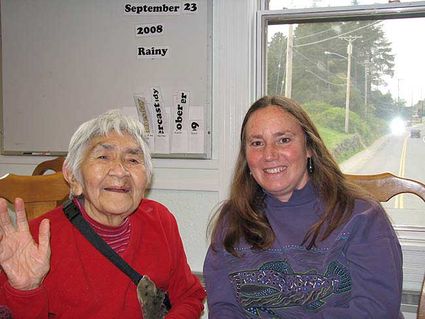
Courtesy Brave Heart Volunteers
Brave Heart volunteer Jean Longstreth, right, shares a smile with Marie.
This article appears courtesy of United Way of Southeast Alaska. To learn more about “living united,” the United Way of Southeast Alaska or any of its 35 partner agencies visit http://www.unitedwayseak.org.


